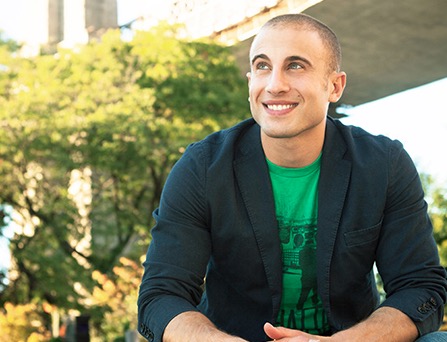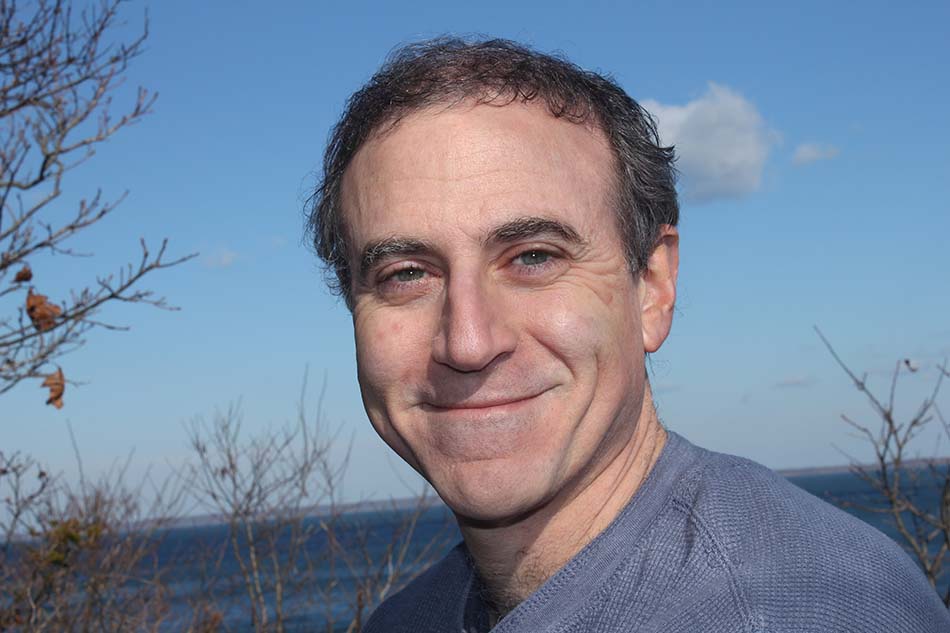The Five Spot: Chris Bashinelli

Like many children of television, Chris Bashinelli grew up watching those commercials of malnourished kids in Africa who needed help. But unlike many, Bashinelli actually did help, and came to regard TV as the powerful means to do so. He created the series Bridge the Gap, seen on National Geographic Channel, PBS and the web, in which he travels to lands far (Mongolia, Uganda) and near (the Pine Ridge Indian Reservation in South Dakota) to forge connections between cultures. The onetime actor (The Sopranos) does this with a mix of humor, charm and understanding—and will soon be doing so in short-form videos as well.
For Bashinelli, a kid from Brooklyn and an avid surfer, the spiritual/philanthropic journey that began with taking part in a cultural exchange program to Tanzania was fueled by losing his beloved father to cancer at age 55 in 2009 and led him to be the youngest male ever to single-handedly moderate the annual UN International Day of Peace. An edited transcript of his conversation with B&C contributing editor Robert Edelstein follows.
Why is Bridge the Gap the right way to reach people across cultures? After watching those commercials of kids in Africa, I thought, how can we use the platform of television to reach people on a consistent basis in other parts of the world? I have found in my travels that developing countries often tend to have some of the most content people I’ve met. On the outside things aren’t going well, but they have to find these inner resources, this spiritual path. They’re more content, inspired and productive than folks back home.… and I thought, how do you create an entertaining show where you learn something about these people and the world?
Why the move to try shorter videos in addition to Bridge the Gap? A one-hour TV show is a long, expensive process. There’s two weeks in the field, months of preproduction and post-production—it can be two years before anyone sees it. I really just want to reach people as fast as possible. These will be self-contained, very fun and funny connections with people in an engaging way, finding the moment a person moves from being part of ‘them’ to ‘us.’ It’ll still be under that umbrella of bridging the gap from people to culture. But maybe Brooklyn to the Bronx, or Brooklyn to Botswana.
What did you learn from your dad that you carry with you? My dad didn’t do anything great, seemingly, from the outside, but it was the manner in which he lived his life that was a reflection to me. It was just about caring for people and always giving them the benefit of the doubt. He had flaws and struggles but at the end of the day, the question is, are we living our life about ourselves or others?
What Bridge the Gap moments have proved to be the most memorable? Sticking my arm up the ass of a cow to see if it was pregnant in a Pine Ridge, S.D., reservation. Meeting a 15-year-old prostitute in Haiti who made $5 a day—that hit me hard. Racing horses across the Mongolian steppe, with no prior experience, with a herd of nomads. And fighting Mongolian Bökh wrestlers. They took it easy on me.
Two big heroes of yours are the primatologist Jane Goodall and Don Rickles. With Dr. Jane, it’s been immeasurable the inspiration she’s had in my life. She looks at me and says, ‘I believe in you. I have hope because of people like you.’ When someone like that says I believe in you, it changes you. And Don—I’m not a politically correct person. I know I have a good heart and care about people and I just know he does as well. And what I love is, he might say something that seems offensive but I believe his intention is to make people laugh, and that’s a beautiful gift.
The smarter way to stay on top of broadcasting and cable industry. Sign up below
Rob has written for Broadcasting+Cable since 2006, starting with his work on the magazine’s award-winning 75th-anniversary issue. He was born a few blocks away from Yankee Stadium … so of course he’s published three books on NASCAR, most notably, Full Throttle: The Life and Fast Times of NASCAR Legend Curtis Turner. He’s currently the special projects editor at TV Guide Magazine. His writing has appeared in The Washington Post and his origami art has been in The Wall Street Journal. He lives with his family in New Jersey and is writing a novel about the Wild West.

